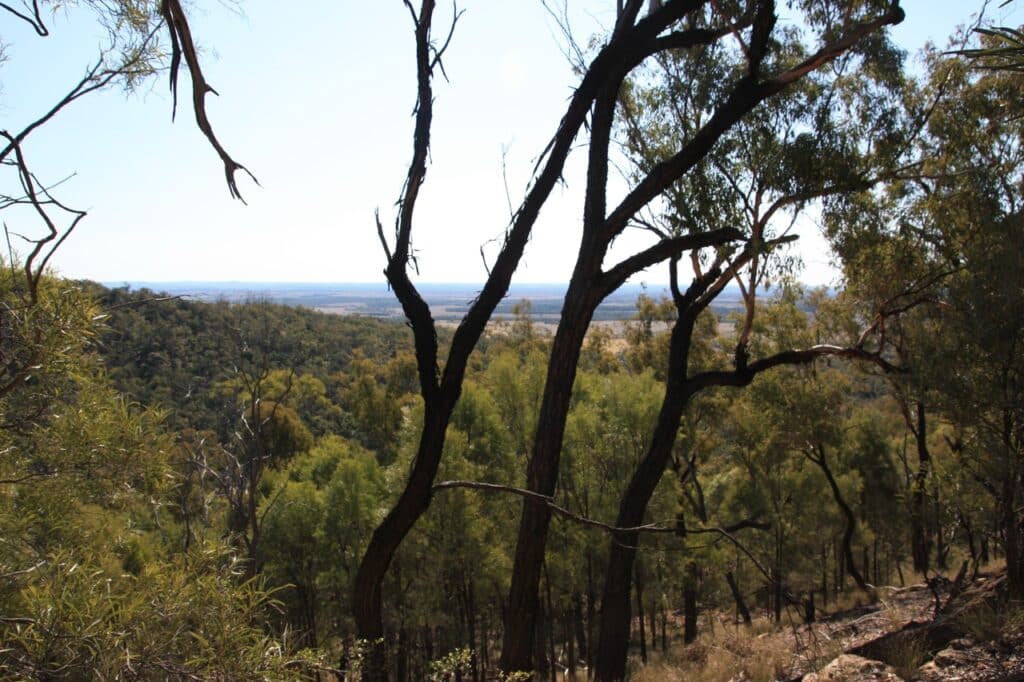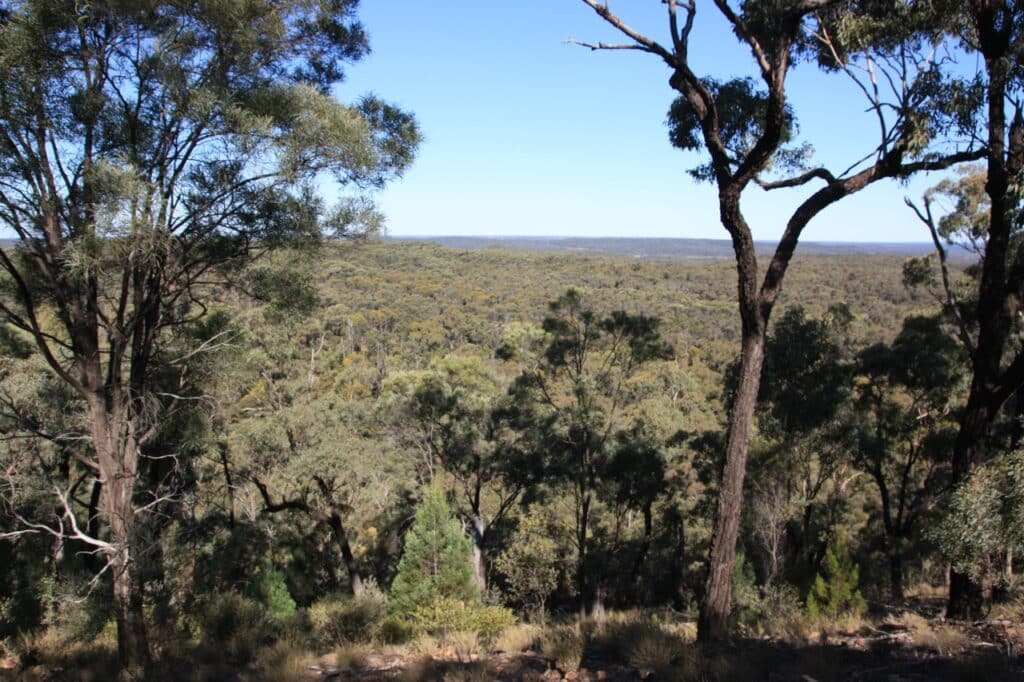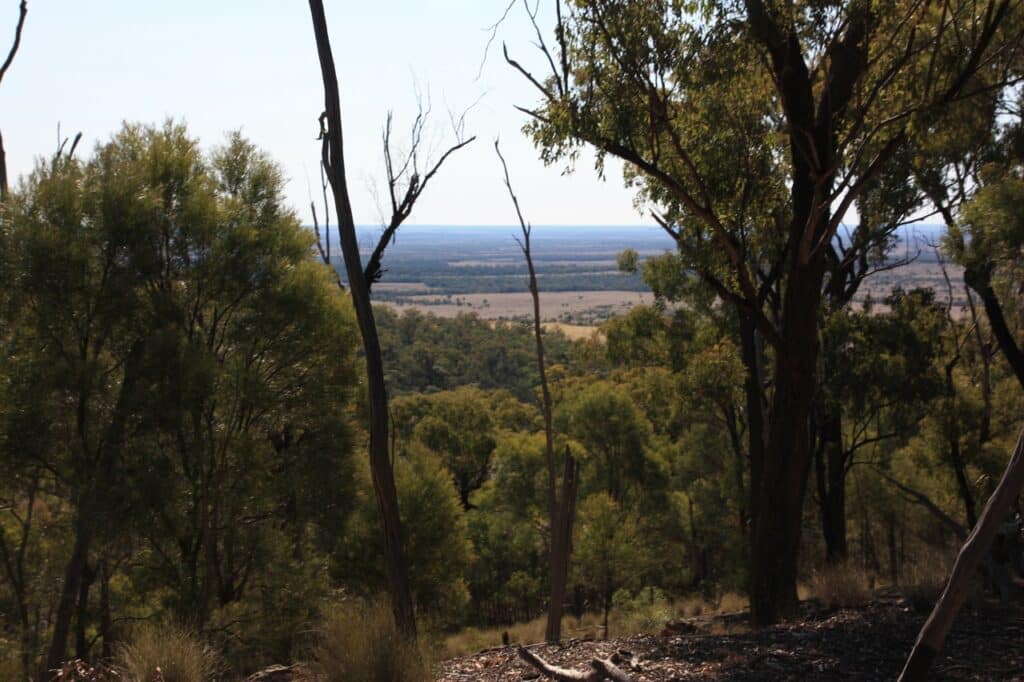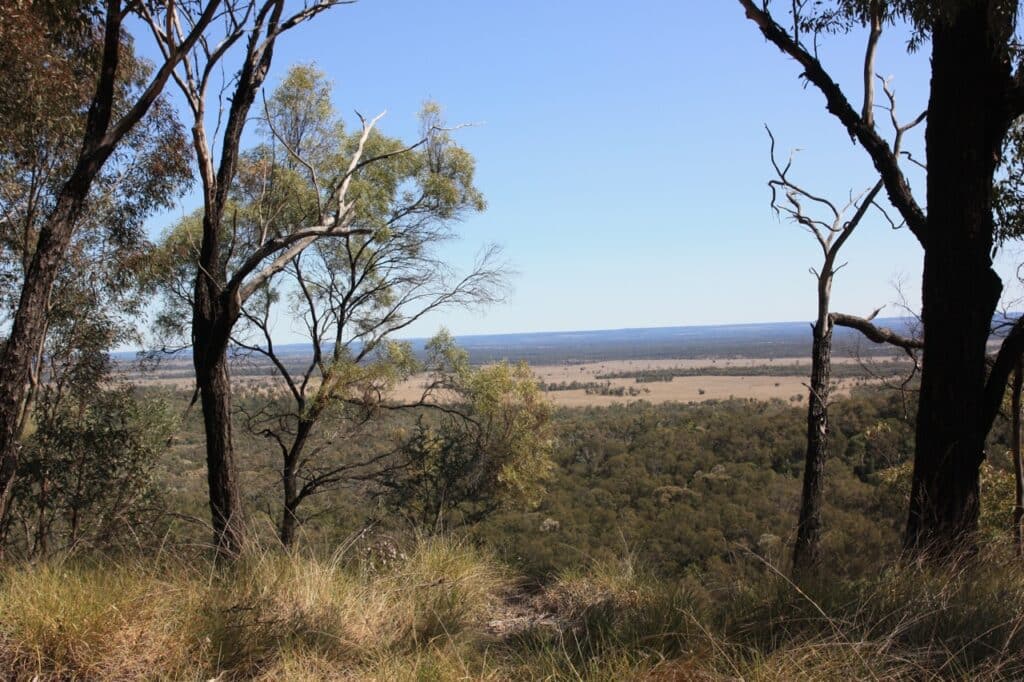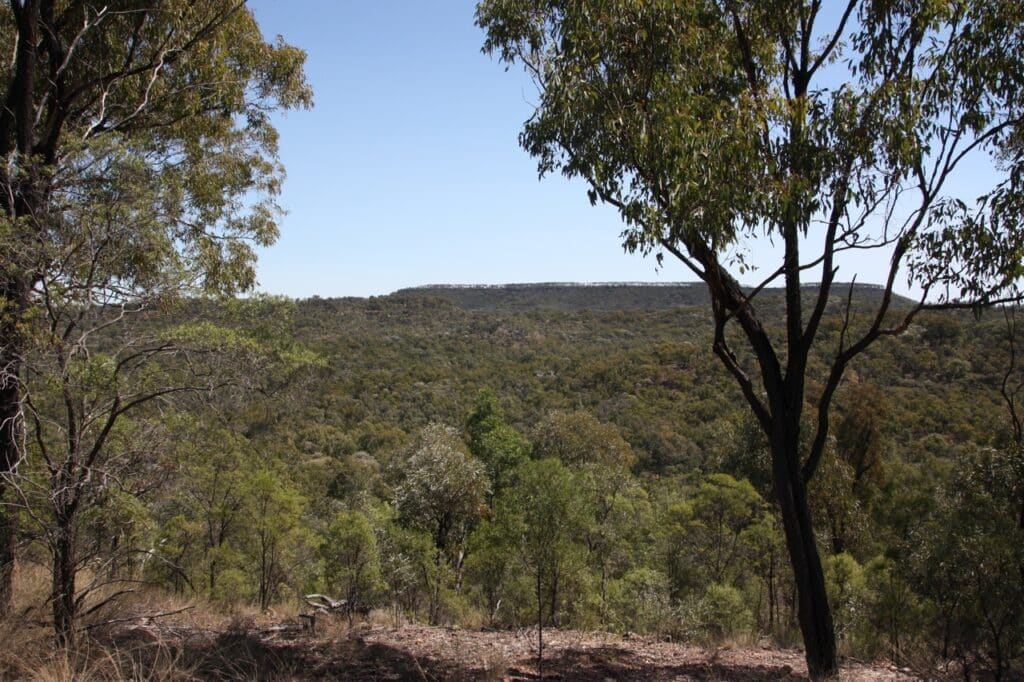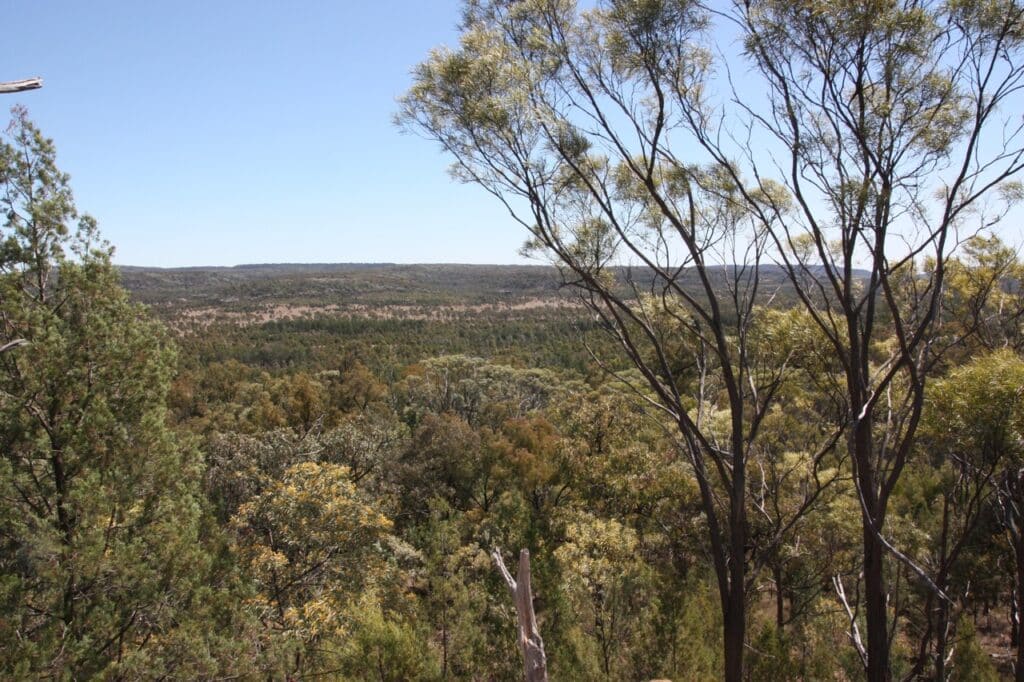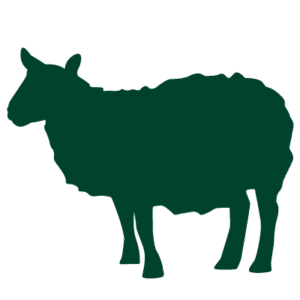Gill and Eunice Campbell are the owners of Claravale, a property located approximately 50km northeast of Mitchell, Queensland. The property has been owned by the Campbell family since 1890, primarily being a holistically managed livestock producing property for the dedication of a wildlife sanctuary, as well as being used for tourism through a campsite and 50km of road ways accessible to the public. It is Gill and Eunice’s intent to continue these property uses, with the potential addition of an educational element.
The sanctuary covers 13,000 hectares, 1620 hectares of which are protected in perpetuity through a Nature Refuge agreement with the Queensland Government, established in 2000 as Mount Armour Nature Refuge. A further 800 hectares has been fenced off to control livestock grazing under an agreement with Greening Australia. Although much of Claravale is cleared for grazing, each of these areas have extensive vegetation corridors throughout, all of which link up with virgin lands.
Vegetation on the lower valley areas of Claravale is dominated by poplar box (Eucalyptus populnea), with silver-leaved ironbark (E. melanophloia), white cypress pine (Callitris columellaris), false sandalwood (Eremophila mitchellii), brigalow (Acacia harpophylla), wilga (Geijera parvifolia), Queensland bottle trees (Brachychiton rupestris) and associated species occupying valley slopes. Dominant on the basalt soils are mountain coolabah (Eucalyptus orgadophila), red bloodwood (Corymbia gummifera), white cypress pine, silver-leaved ironbark and prickly pine (Bursaria spinosa), while on the sandstone uplands gum-topped ironbark (Eucalyptus decorticans), brown bloodwood (Corymbia trachyphloia), budgeroo (Lysicarpus angustifolius), furry oak (Allocasuarina inophloia), currawong (Acacia sparsiflora), lancewood (Acacia petraea) and numerous shrubby wattles (Acacia spp.) feature heavily.
Wildlife is abundant on Claravale, with 129 bird, 21 mammal, 27 reptile and 6 amphibian species being recorded to date. Examples of species to be found on the sanctuary include the black-striped wallaby (Macropus dorsalis), Herbert’s rock wallaby (Petrogale herberti), northern brown bandicoot (Isoodon macrourus), white-striped mastiff bat (Tadarida australia), eastern long-necked turtle (Chelodina longicollis), emerald-spotted tree frog (Litoria peronii), superb fairy-wren (Malurus cyaneus), sacred kingfisher (Todiramphus sanctus), emu (Dromaius novaehollandiae), blue-faced honeyeater (Entomyzon cyanotis) and sugar glider (Petaurus breviceps).

